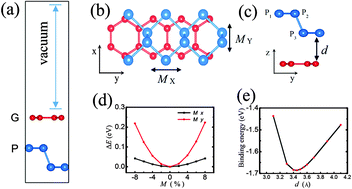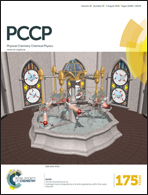Tuning the Schottky contacts in the phosphorene and graphene heterostructure by applying strain†
Abstract
The structures and electronic properties of the phosphorene and graphene heterostructure are investigated by density functional calculations using the hybrid Heyd–Scuseria–Ernzerhof (HSE) functional. The results show that the intrinsic properties of phosphorene and graphene are preserved due to the weak van der Waals contact. But the electronic properties of the Schottky contacts in the phosphorene and graphene heterostructure can be tuned from p-type to n-type by the in-plane compressive strains from −2% to −4%. After analyzing the total band structure and density of states of P atom orbitals, we find that the Schottky barrier height (SBH) is determined by the P-pz orbitals. What is more, the variation of the work function of the phosphorene monolayer and the graphene electrode and the Fermi level shift are the nature of the transition of Schottky barrier from n-type Schottky contact to p-type Schottky contact in the phosphorene and graphene heterostructure under different in-plane strains. We speculate that these are general results of tuning of the electronic properties of the Schottky contacts in the phosphorene and graphene heterostructure by controlling the in-plane compressive strains to obtain a promising method to design and fabricate a phosphorene–graphene based field effect transistor.


 Please wait while we load your content...
Please wait while we load your content...